Biryani varieties in India- doesn’t it sound like a strange topic to read during this Pandemic? I am writing this blogpost in such a time when, forget about restaurant food, you can’t even go out of your home. It’s day-2 for the home-quarantine during the Coronavirus outburst. Now you may ask me a very simple and valid question- why am I writing on these places in this turbulent time. The answer, my friend, is quite simple. One day, someday, this too shall pass and we’ll come back stronger. Life will be happier and people will actually look forward to seeing others. And I hope people will stick to their (so-called) new-found passion for food. And then, my friend, this article on books during corona lockdown, will come in handy. And lastly, we are content writers, even if we don’t survive this state, the content on Mohamushkil will make me immortal.
Biryani in India is almost like a religion. Now, I know that I might get killed for this nonsense talk. But please spare a minute and read this. When we’re in trouble, when we’re depressed, we take the help of religion- for inner peace. and to think of it, biryani does almost the same. But then there are numerous varieties of Biryani in our country. And here is a compilation for the same. Please note, this is not complete and will be edited once I experience a new variety.
I won’t talk about the history of biryani, which I personally believe, have talked over in multiple blog posts. If you feel, please check here. India is a vast country and we can classify it in four zones- East/ North/ West and South. Now, different zones mean different food habits. But there is one thing which is common here and that is a one-dish meal named biryani. The recipes vary- well not much, but to some extent. One or two ingredients here and there makes it an entirely different variety altogether. Wherein, we find a good variety of meat- pulao in Southern India, it’s never the same in the rest of the country. Let us start the quest for varieties of Biryani in India.
As this will be a super long blog post, it’ll be divided into two parts. And this is part 1- the East and North chapters
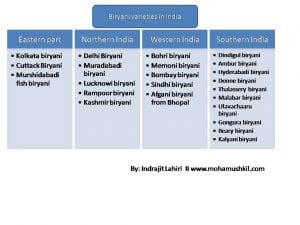
Eastern India
Kolkata biryani
Well, there is a constant battle between Kolkata and Hyderabad on which is the biryani capital. Wherein Hyderabad wins by the sheer sales number, us at Kolkata, prefer to believe in the subtlety of the end product. And if there is one thing that sets Kolkata biryani apart, is the big chunk of Potato. Now, there’s a debate on how and why that potato came into existence, is a big big question mark. Whether the last Nawab of India was under financial pressure, or he wanted his followers to taste an exotic vegetable- let’s not go in that. But, the typical feature of this variety is a large potato chunk and one or two big pcs of meat- period. A light aroma of Rosewater and sweet ittar– heaven is here.
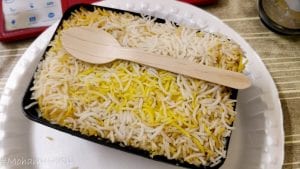
Cuttack biryani
Well for this, I took the help of my friend and Odisha food champion Rohit Srivastava. Well as per him, Cuttack Biryani is quite similar to Kolkata Biryani- a large piece of meat, potato- all are almost the same. Well, almost is the keyword. So, there is one interesting element here. As per Tuku Mian- the legendary biryani ustad from Cuttack, in Cuttack biryani, Gulnad is used and that’s what sets it different from the rest. Please check the video here.
Murshidabadi Biryani
Murshidabad is an interesting place. Nawabs ruled here for many centuries. So, there is some ambiguity in this variation. A few say mustard oil is used in this variety. But when I went to Murshidabad to search this variety and met the current Nawab of Murshidabad (from Mirzafar Gharana) Fahim Ji, he spoke of Mahi or fish biryani. Please check the detailed post here.
North India
Now North India is an interesting place for Biryani in India. Because the great Kolkata Biryani is said to have originated from this region. Please refer to the chart above and let’s start with Delhi.
Delhi Biryani
My friend Anirban Bora took me around the Jama Masjid area and there only this legendary Biryani shop is situated- Pehelwan ki Biryani, which is famous for its Achari Tariwali Chicken Biryani. The biryani is flavored with yellow chilly and thus having its special aroma. Delhi food rarely uses dry fruits and other costly ingredients. It’s supposed to be a Lashkari (or rich army-like) food and not shahi or royal food like the Awadh. It had a not-so-subtle aroma of achar spices and yellow chilly and small chicken pieces. This had set it apart from the rest biryani varieties. Please check the detailed post here.
Lucknow Biryani
This variant undoubtedly is one of the most respected biryani in India. The Awadhi style of cooking is followed here- originated in Lucknow. And surprisingly, it is closely related to the neighboring Bhojpuri cuisine. The whole cooking style is highly influenced by Central Asia, the Middle East, and northern India. Agra being one of the key areas during the Mughal emperor, most of the champion bawarchi and Rakabdars were shifted there, and as a result, the cuisine got elevated to a different level.
As Awadh grew in the historical importance of Mughal nawabs, the cuisine got influenced by sophistication of Mughlai or Persian cuisine but taking a cue from the Hindu masters as well. The distinct use of ingredients was of primary importance in this cuisine. “For instance, garlic is never used in a dish, where saffron is used”- says Chef Gulam Qureshi. And ginger and garlic pastes are prepared separately instead of a generic common one. and it’s that place where many still believe that there is nothing as Lucknow Biryani- there is just Lucknow Pulao. But romance kept aside, the folklore tells us a different story.
Biryani, as we know today, was born out of famine in Lucknow. In 1784, during the kingdom of Nawab Ashfadullah, the entire Oudh came under a famine. And during that time, nawab started scheme as food-for-work for almost 20,000 people. The saying went like this …
Jisko na de moula
usko de Ashhfadulla …
And thus the famous Bara Imambara of Lucknow was built. And guess, what was the staple food for the workers? No brownie points for guessing- it was Biryani. The reasons? It can be produced in bulk with minimal labor, has protein and carbs together, and is damn tasty. Yes, history can be fascinating and tasty too … Lucknow Biryani is said to be rich in nature and coloring is used. Potato is never used. But the richness of rice, meat with its pure taste and not-so-subtle aroma which make this variety stand apart. Honestly, I have never been to Lucknow myself, for a food tour. But this is what I could gather from my friends who have been there.
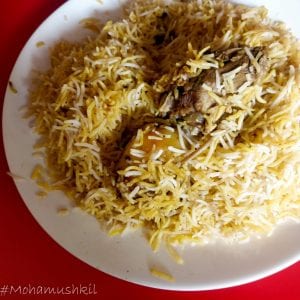
Rampur biryani
Rampuri khana got the coarseness from the use of the whole spices. And this biryani is often referred to as a pulao- or rather Yakhni Pulao. It’s cooked in meat stock and is super subtle in taste. Going by the tradition, whole spices are majorly used. The whole thing is much closer to the Persian ancestor. Please check it in detail here.
Moradabad Biryani
And finally, the last champion of the North India biryani empire, let’s talk of the poor man’s biryani- Moradabadi Biryani. This is a very welcome change from the biryanis that we’re used to loving elsewhere. It’s white in color and more of a simple dish with the simple fragrance of whole black pepper, green chilly, and a hint of lime. The rice used is super long-grained. The whole dish is said to be invented by the workers from the Muradabad region had to invent some one-dish-meal which will be cheap, yet fragrant. and this was there. Even it’s said that there is hardly anything by the name Muradabadi Biryani at Muradabad. Frankly, I’ve tasted quite a few varieties of biryani in India, starting from Dindigul to Chembur Biryani and I’ve literally grown up with Kolkata Biryani, but I’ve never tasted something as fragrant as this. Please check the detailed post here.
Kashmiri Biryani
Well, Kashmiri biryani is a strange thing. I’m not very sure of the authenticity of the recipe, but all I know is that it uses a lot of dry fruits. I’ve tested it during my family trip to Kashmir, at a roadside stall. It was chicken biryani. The rice was orange colored and the chicken was kinda dry, but it was biryani. It was 70/- for half portion and though no potato (obviously), two types of accompaniments were served along with it. It was served with Dahi ke chutney and spicy Mooli achaar. The rice was nicely fragrant with saffron and the overall experience was pretty good. I again had the biryani in Khayam Chowk, but the product was different. And, somehow, I loved this humble roadside Zafar Bhai more.
Please check the detailed post on Street food in Kashmir here.
Well, this is just half of the varieties of Biryani in India- the East and North chapters. Please let me know if you know any other varieties, in the comments section. It’ll help me better. And the lesser-known West and strong Southern Biryani stories, please check the below link …
Bon apetit !!!
I can be reached at 9903528225/ indrajit.lahiri@ymail.com

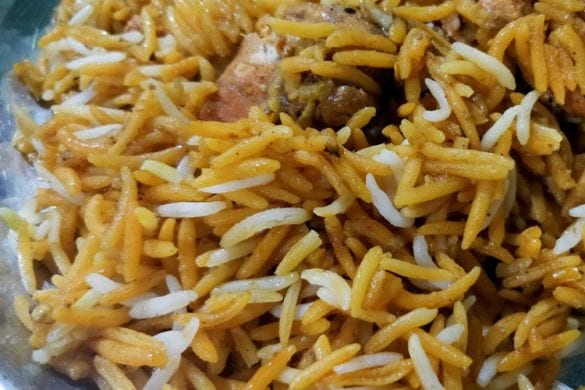



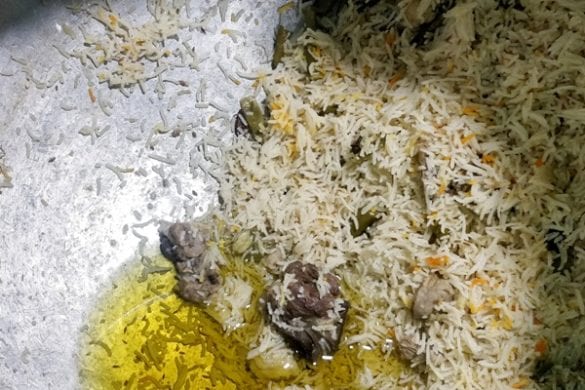
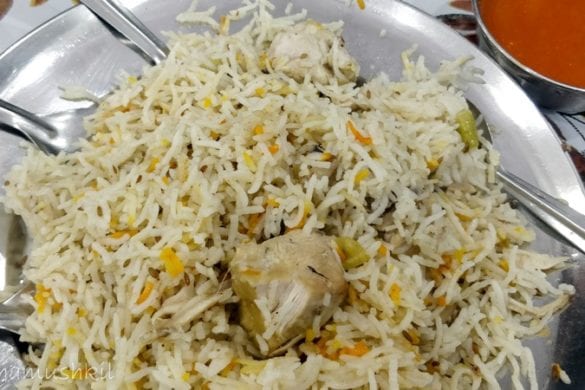

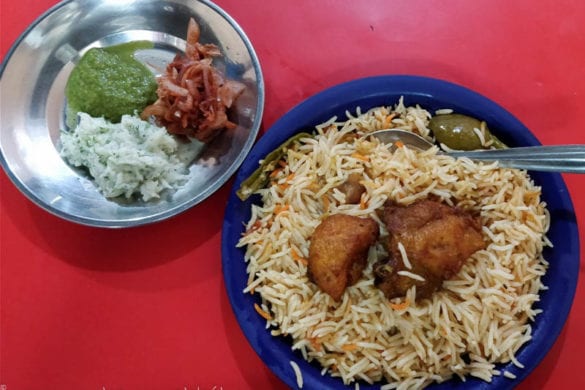
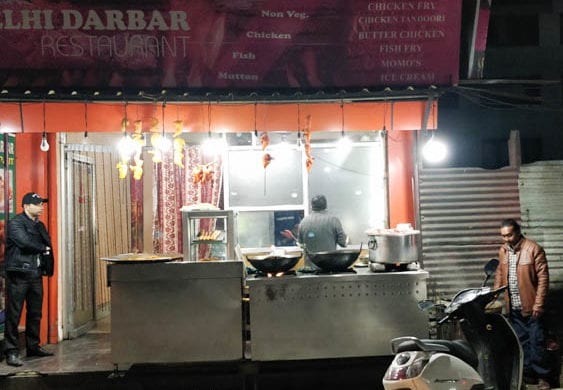

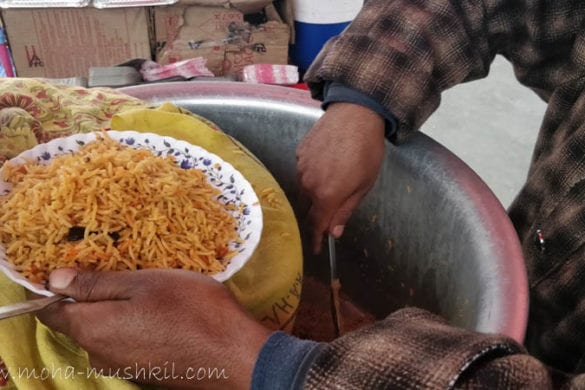
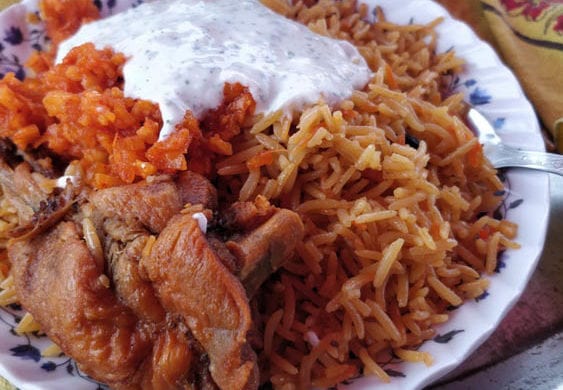
7 comments
A little info Indrajit babu, You have written about History of Biriyani, and story of Nawab Ashfadulla and awadhi biriyani aptly. However there is another school of thoughts regarding the origin of biriyani in India, that is…
It is a modified version of persian pilaf/pulao. And it acquired the present form of biriyani during the time of Mughal Badshah Sahjahan. It was created by QueenMumtaz to supply adequate, nutritious, well balanced food to the war soldiers of Sahjahan’s troop.During war, to reduce the numbers of utensils to be carried along, biriyani was popularized,as it is (almost) an on pot meal.
Hope you will find this info interesting 🙂
* One pot meal, I meant
As far as I know, potato is also used in Sindhi Biriyani. Although, the common belief is it is the unique characteristic of Kolkata Biriyani.
I could eat any type of biryani as long as it is from Kulcha King, a known indian food restaurant. I am big fan of indian foods and biryani, kulcha and kebab are my favorite ones. I am always eating a piece at home. I am using online-ordering offers from Kulcha King.
hi
thanks for giving great information. keep posting.
whole sale cooking oil in hyderabad
[…] in a little backgrounder on the enigma that biryani is throughout India, these two posts (post 1, post 2) by an ace food blogger have all that you need to […]
[…] Religion of Biryani in India- East and North chapters […]